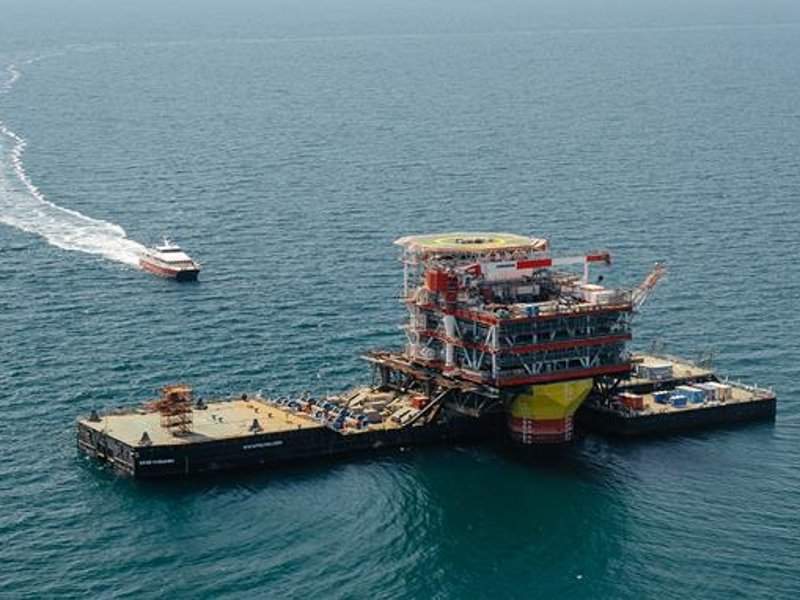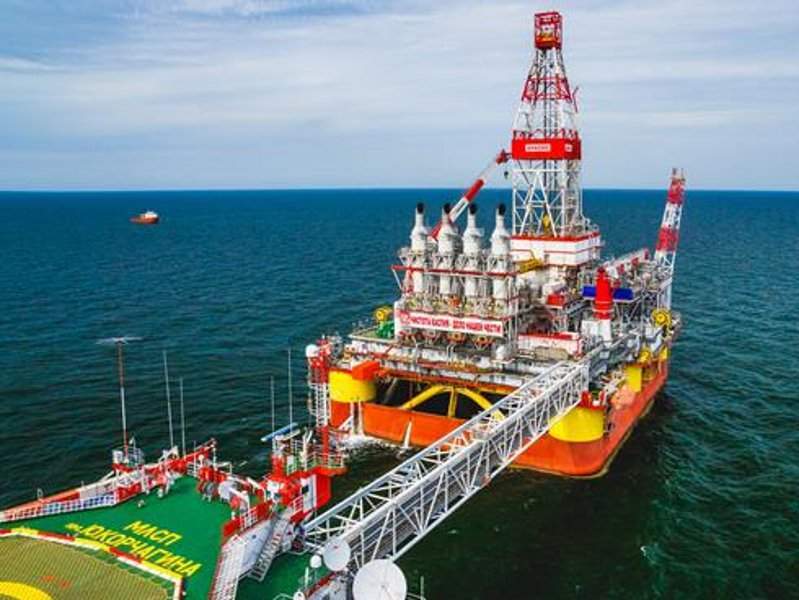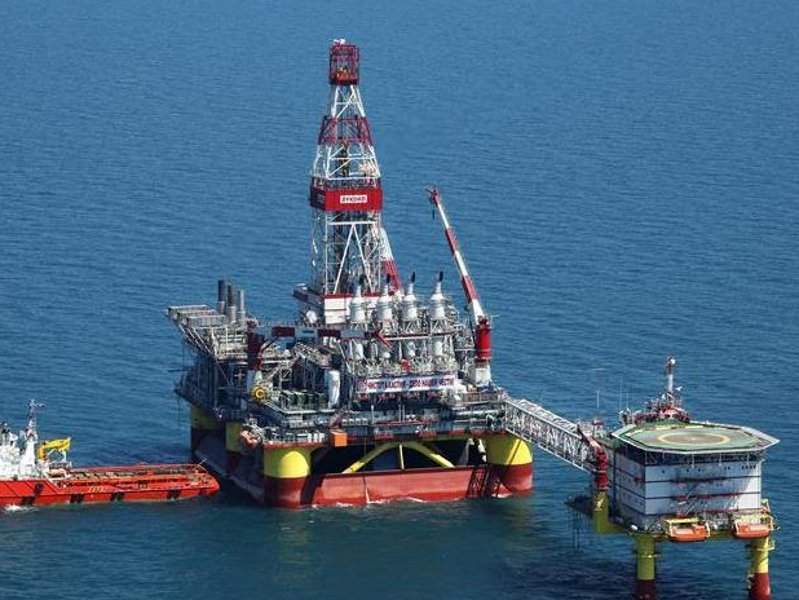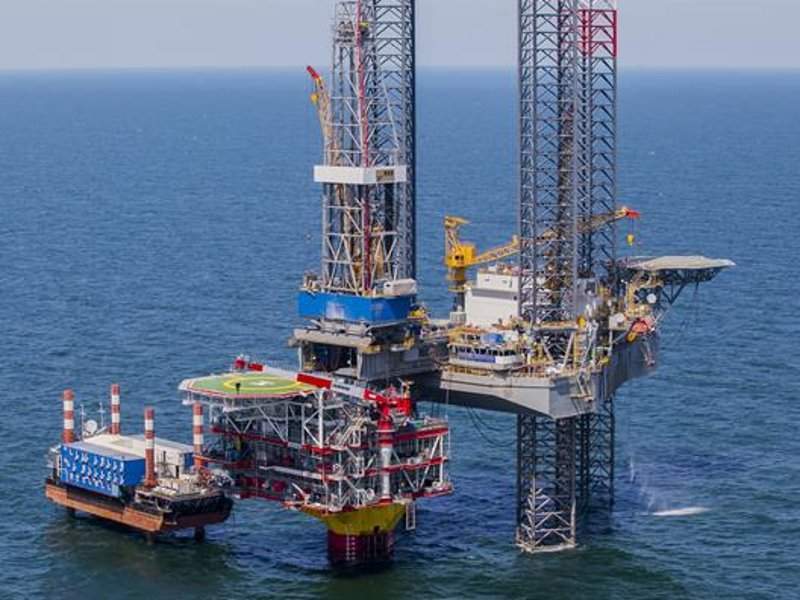Yury Korchagin oil and gas field is located in the North Caspian Sea, approximately 180km off the coast of Astrakhan city, Russia.
Owned and operated by Lukoil, the offshore field was discovered in 2000. It was brought into production in 2010 following the completion of the $1.12bn stage one development.
Yury Korchagin is Lukoil’s first field in the Caspian Sea to come on-stream. The cumulative oil production of the field reached 8.6 million tonnes (Mt) as of November 2018.
Construction on stage two development of the offshore field has been underway since 2017.
Project Gallery
-

The Yury Korchagin field is located in the Russian waters of the North Caspian Sea. Image courtesy of Lukoil.
-

The Yury Korchagin field is owned and operated by Lukoil. Image courtesy of Lukoil.
-

The Yury Korchagin field was brought into production in 2010. Image courtesy of Lukoil.
-

The second stage development of the Yury Korchagin field is expected to be completed in 2019. Image courtesy of Lukoil.
The Yury Korchagin field is anticipated to produce up to 2.5Mt of crude oil and 1.2 billion cubic meters (bcm) of natural gas a year, starting from 2019.
The offshore field is believed to hold 570 million barrels of oil- equivalent reserves.
Yury Korchagin offshore oil and gas field stage one development details
The Yury Korchagin stage one development involved a fixed offshore ice-resistant platform (LSP-1) designed to operate 30 wells including 26 production wells, three water-injection wells, and one gas-injection well.
Installed 86.6m above the sea level, the LSP-1 main production platform is 95.5m-long and 72.2m-wide and weighs 25,655t. The platform also houses a 560t drilling complex and two cranes.
The offshore field also has a second platform, named LSP-2, which houses living quarters for 105 personnel, a medical facility, storerooms, ship repair and service facilities, a helpdesk, and rescue equipment.
The LSP-2 platform is 41.5m-long and 40.2m-wide, and weighs 1,340t.
A single-buoy moored (SBM) floating storage and offloading (FSO) unit is installed 58km away from the main production platform for the transshipment of oil to shuttle tankers.
The storage unit is connected to the LSP-1 through a 58km-long and 12in-diameter pipeline.
Yury Korchagin stage two development details
The Yury Korchagin stage two development includes the installation of a satellite wellhead platform to drill new production wells in the eastern part of the Yury Korchagin field and a 9km-long multi-phase intra-field pipeline to supply the well-flow to the main production platform, LSP-1.
The satellite platform also houses living quarters for the temporary stay of personnel, and a helideck.
The topside of the wellhead platform was installed in April 2018, while drilling for the second phase development of the field started in May 2018.
The drilling of the first production well from the wellhead platform was completed in July 2018. Drilled to a depth of 5,217m, the well’s initial flow rate was recorded at 500t of crude oil a day.
The second production well under the stage two development was drilled to a depth of 3,736m in November 2018. It provided an initial flow rate of 600t crude oil a day.
Oil supply from the Yury Korchagin field
The oil produced at the field is supplied onshore to Makhachkala by shuttle tankers. At Makhachkala, the oil is fed into the Makhachkala Novorossiysk pipeline, which is jointly operated by SOCAR and Transneft.
Contractors involved with Yury Korchagin offshore oil and gas field development
United Shipbuilding Corporation (USC) of Russia provided the LSP-1 fixed offshore ice-resistant fixed platform for the Yuri Korchagin field.
Keppel Singmarine delivered the FSO unit for the Yury Korchagin field in 2009. The hull of the FSO was constructed in Singapore and assembled by Keppel Fels' Caspian Shipyard Company (CSC) in Baku, Azerbaijan.
McDermott was awarded the engineering, procurement and construction (EPC) contract for the 58km subsea pipeline connecting the central production platform with the floating storage unit in January 2007.
McDermott was also responsible for the installation of the main production platform LSP-1, while Stroytransgaz installed the technological complex for the production platform.
BKE Shelf was the drilling contractor for the Yury Korchagin stage one development.
Tendeka, a company based in the UK, was selected to provide the autonomous inflow control devices for the Yury Korchagin stage one development in December 2014.
